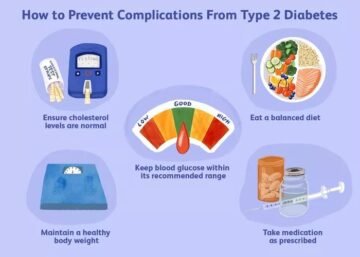
Type 2 diabetes can sometimes be mistaken for other medical conditions or diseases due to shared symptoms or risk factors. Some of the conditions that type 2 diabetes is commonly mistaken for include:
Type 1 Diabetes: Type 1 diabetes is an autoimmune condition where the body’s immune system attacks and destroys insulin-producing cells in the pancreas. While there are distinct differences between type 1 and type 2 diabetes, they can sometimes be confused, especially when initially diagnosed.
Metabolic Syndrome: Metabolic syndrome is a cluster of conditions, including abdominal obesity, high blood pressure, high blood sugar, and abnormal lipid levels, that increase the risk of cardiovascular disease. Type 2 diabetes is one of the components of metabolic syndrome.
Gestational Diabetes: Gestational diabetes occurs during pregnancy and is characterized by high blood sugar levels. Women with gestational diabetes may be at risk of developing type 2 diabetes later in life, so the two conditions can be linked.
Polycystic Ovary Syndrome (PCOS): PCOS is a common hormonal disorder in women that can lead to irregular menstrual cycles, obesity, and insulin resistance, increasing the risk of type 2 diabetes.
Stress or Anxiety: High levels of stress or anxiety can lead to fluctuations in blood sugar levels, which may be mistaken for diabetes symptoms.
Thyroid Disorders: Thyroid disorders, such as hypothyroidism, can cause symptoms like fatigue, weight gain, and mood changes, which can overlap with diabetes symptoms.
Pancreatic Disorders: Conditions affecting the pancreas, including pancreatitis or pancreatic cancer, can lead to changes in insulin production and blood sugar regulation, mimicking diabetes symptoms.
Medication Side Effects: Some medications, such as corticosteroids, can lead to elevated blood sugar levels, which may be misattributed to diabetes.
It’s important to note that a proper diagnosis by a healthcare professional is crucial in differentiating between these conditions. Diabetes is diagnosed through blood tests measuring blood glucose levels, and additional tests may be required to rule out other potential causes of similar symptoms. If you suspect you may have diabetes or any of the conditions mentioned, it’s essential to consult with a healthcare provider for a thorough evaluation and appropriate treatment





